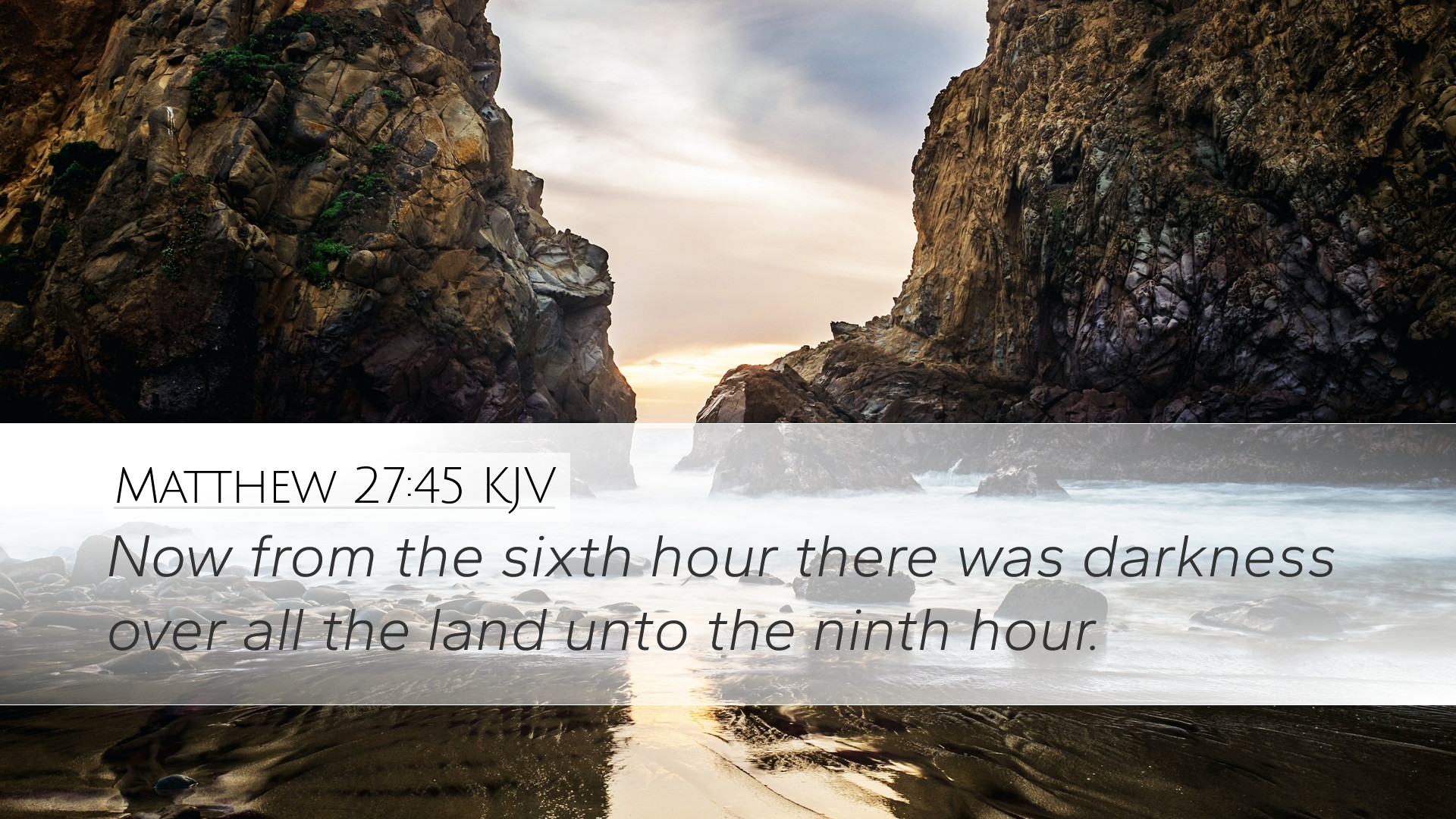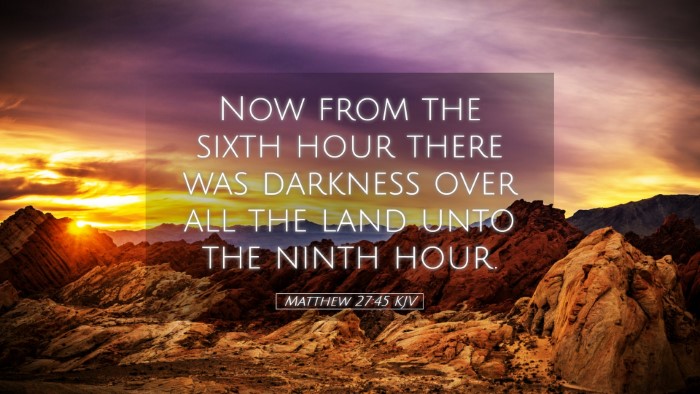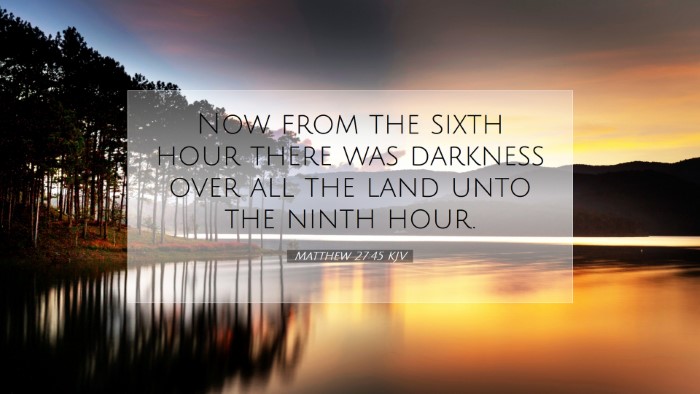Commentary on Matthew 27:45
In Matthew 27:45, we encounter one of the most profound moments during the crucifixion of Christ:
"Now from the sixth hour there was darkness over all the land unto the ninth hour."
This darkness, lasting for three hours, is laden with theological significance and has been the subject of extensive interpretation by esteemed commentators.
Context and Background
The crucifixion of Jesus signifies the climax of the gospel narrative. The events leading to the crucifixion are steeped in betrayal, trial, and rejection. At this crucial juncture, the darkness serves as a divine response to the heinous act of crucifying the Son of God.
Theological Significance of Darkness
1. Symbol of Judgment
Matthew Henry observes that the darkness may symbolize the judgment of God upon the sin of humanity.
As sin brought about separation from God, the darkness reflected this estrangement:
"The sun purposely veils his face, as if in mourning for the suffering Lamb."
2. Fulfillment of Prophecy
Albert Barnes points out that this event fulfills various prophetic themes in Scripture, reflecting
God's displeasure with sin and the magnitude of the sacrificial death of Christ.
The darkness recalls Amos 8:9, where God threatens a darkening of the land as a sign of His judgment.
3. A Cosmic Response
Adam Clarke highlights that this cosmic event is remarkable; darkness enveloped the earth, indicating
that creation itself responded to the tragedy of the cross:
"The physical world reflects the spiritual turmoil and sin at the moment of His death."
The Duration of Darkness
The specific timing of the darkness—beginning at the sixth hour and ending at the ninth—holds significance.
This timeframe corresponds to the hours when Jesus was crucified.
The intensity of the darkness deepens the solemnity of the occasion, as it occurs in the midst of His suffering.
Divine Silence and Suffering
During this period, the silence from heaven is notably profound. Matthew Henry remarks that
"even God seemed to withdraw His light, leaving Christ to suffer in obscurity."
This withdrawal signifies the weight of sin placed upon Jesus, leading to a feeling of abandonment.
The darkness also accentuates Christ’s emotional suffering. The cry of dereliction, articulated in the following verses, further underscores His identification with human despair.
Responses from Humanity
Throughout the crucifixion, various responses arise from onlookers. The darkness serves as a backdrop against which the reactions of those present—mockers, disciples, and Roman soldiers—serve to demonstrate the severity of this moment.
They witnessed the unfolding of events, yet their understanding varied greatly.
-
Mockers and Sinners: Rather than repent, some mocked, blinded by their sin and ignorance.
-
Disciples: The faithful likely experienced confusion and despair, grasping only dimly at the
truth of Jesus’ mission and impending resurrection.
-
Centurion's Realization: Ultimately, as stated in Matthew 27:54, the centurion's
recognition of Jesus' divinity amidst the darkness and subsequent events stands as a testimony to
how the cross challenged perceptions of power and divinity.
Application for Life and Ministry
As we reflect on Matthew 27:45, there are rich applications for pastors, theologians, and laypeople alike.
The darkness is a reminder of the weight of sin, the efficacy of Christ’s atoning work, and the hope that emerges through despair.
1. Understanding Atonement
The suffering of Christ encapsulates the doctrinal essence of atonement, suggesting that through His pain,
we receive grace. This calls ministers to communicate the gravity of sin and the hope found in forgiveness.
2. Finding Meaning in Trials
Just as darkness enveloped Christ’s final hours, believers often encounter seasons of darkness in their
lives. This teaches us that God is present in our suffering, inviting us to trust in His sovereignty.
3. Encouragement in Witness
Finally, the response of the centurion beckons Christians to respond boldly to the truth of Christ,
even amidst cultural darkness. Sharing the message of hope becomes imperative as we embody the light
of Christ in our communities.
Conclusion
Matthew 27:45 serves not only as a historical account of the crucifixion but as a deep well of theological insight.
The darkness that fell over the land for three hours encapsulates the transition from death to new life, and the
profound mystery of God’s love manifest in suffering. As we study these verses, let us do so with reverent hearts,
seeking to understand the depth of Christ’s sacrifice and the implications for our lives and ministries.


